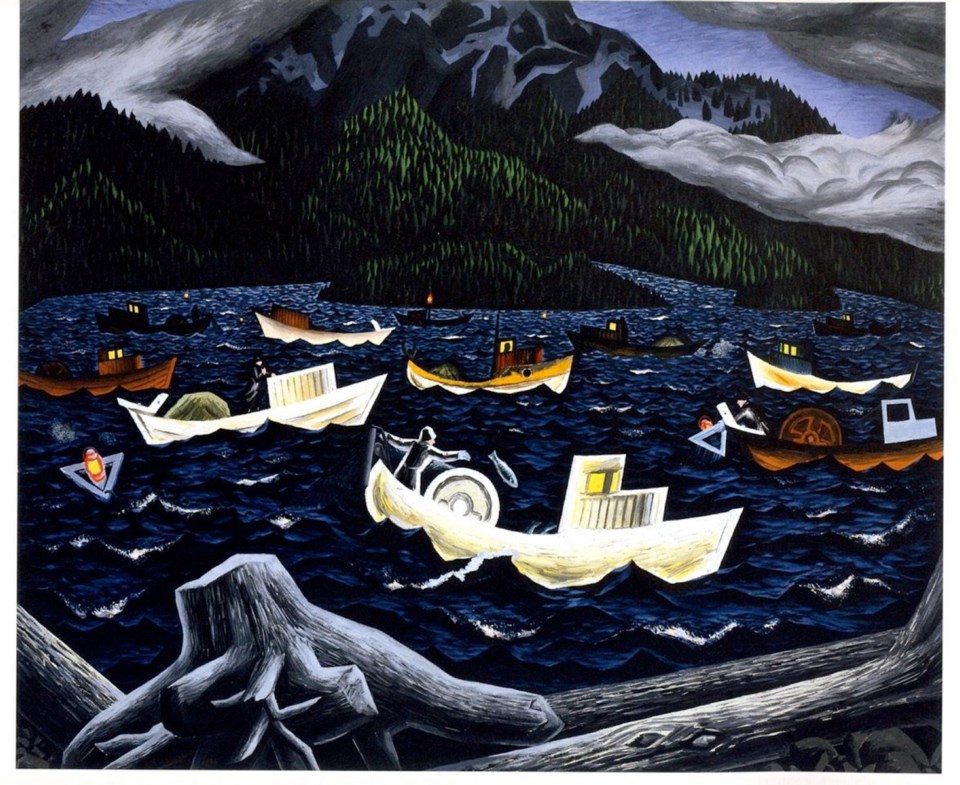If you’re lucky enough to own artwork by E.J. Hughes, please accept our sincerest congratulations. Because your art collection has just increased in value by many hundreds of thousand of dollars.
Paintings by the late Vancouver Island artist should continue to rise in value after Fish Boats, Rivers Inlet sold for $2 million at auction in Toronto on Wednesday.
That total surpassed the previous high of $1.593 million paid for Hughes’ 1949 painting The Post Office at Courtenay, B.C. at a Vancouver auction in 2016.
Though Fish Boats, Rivers Inlet hit a high-water mark, work by Hughes has been increasing in value for years. A bid of $1.14 million won the 1948 Hughes painting Coastal Boats Near Sidney, B.C., at auction in 2011. A mural by Hughes located at Nanaimo’s Vancouver Island Conference Centre is now estimated to be worth more than $3 million.
Prices being paid for Hughes works have been climbing since his death in 2007. In 2000, a Vancouver auction house sold a 1970 Hughes painting, Harbour Scene, Nanaimo, for a then-record $105,750.
“If that one came for sale today, you could add another zero to that total with no question at all,” said Victoria artist and author Robert Amos, the artist’s official biographer.
“He’s an absolute fixture in auction houses. His work is almost always there. And typically, the prices just keep rising and rising and rising.”
Hughes, a Vancouver native, moved to Victoria to live with his parents in 1946. His first painting after the move was Fish Boats, Rivers Inlet, one of a half-dozen “dark” paintings made by Hughes before his relocation to Shawnigan Lake in 1951.
That era of his work now seems to have the most commercial appeal. “Those ones he did [during that time] are recognized as really essential items,” said Amos, who profiled Hughes in the new biography E. J. Hughes Paints Vancouver Island.
“But many of them will never come up for sale, because they are owned by institutions.”
Hughes lived in Shawnigan Lake until 1974 and called Duncan home until his death at the age of 93. He never left the Island after 1967, according to Amos, and painted more pictures of Crofton than anywhere else. As for his stature in the art annals of Western Canada, he’s considered a close second to none other than Emily Carr.
“As far as Western Canada goes, Emily Carr is always the top. But he’s the next one — he’s in second place. There is nobody else you could talk about. They don’t come even close.”
The Audain Art Museum in Whistler features 19 Emily Carr oil paintings in one room, but the next gallery is devoted to Hughes, Amos said. “And there are 19 painting of his there. That puts it into context.”
Hughes lived a semi-reclusive life in comparison with other Canadian artists.
“He was very quiet,” Amos said.
“He never went to an opening of any exhibition of his work and he avoided interviews. He just wanted to paint.”
